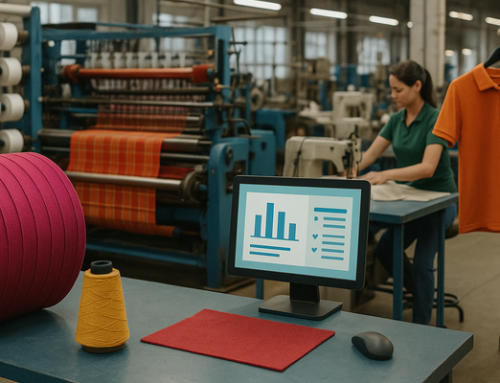Cozy Home Textiles: Types, Features and Uses
You know that feeling when you enter someone’s home for the first time and immediately recognize the style and personal touch of the person who lives in it? Or when you revisit a place because it’s especially warm and cozy? I am sure that each of you has a favorite corner in your home or office that is full of warmth and comfort.
We owe these sensations to a large extent to home decoration through home textiles. This is what makes the difference – what makes the space comfortable, pleasant and personal for us. Our house is our little world, our oasis, a safe place, a family corner. And home textiles are in a way the “clothes” of our home, so they deserve at least as much attention as our personal clothes.
But home textiles are much more than decorating our living space. They bring warmth, comfort and functionality to our everyday life, so they play a serious role.
That’s why we dedicate today’s post to home textiles, their types, properties and applications. Let’s dive into the world of home textiles, which can make everyone’s home a cozy and pleasant little paradise.
Introduction to Home Textiles
Home textiles are crucial in home decoration, combining beauty with utility. As our living space shrinks, the role of home textile products in creating comfort and practicality for living has increased. From curtains to upholstery, carpets and decorative pillows, these textiles can change the look and feel of any room, allowing us to express ourselves.
Fabrics add to the beauty and utility of our homes. For example, soft bedding, comfortable furniture or durable kitchen towels make our everyday life better and easier.
Home textiles also help to create an atmosphere in every room of the home, with its aesthetics and practicality, which makes it essential in home decoration. When we choose the right textile elements, we create a space that is pleasant and complete.
Types of home textiles
Home textiles play a vital role in home decoration and comfort. They include various items such as floor coverings, quilts and fabrics used to cover furniture and beds. These textiles are made from a wide variety of materials, including natural and artificial fibers.
Also, different seasons require different textiles that can be used in different ways, such as light fabrics in summer and heavier textiles in winter.
Some products serve functionality, such as oven mitts, which must have special characteristics, but with today’s innovative, technical fabrics, which have improved properties, it is quite easy to introduce aesthetics into these products, and this is exactly the trend that Home textile strives for. today’s decoration.
That winning fusion of beautiful and high-quality, stylish and useful provides incredible possibilities and, most importantly, user satisfaction. For example, the bedding is not only beautiful and has an excellent pattern, but also has anti-allergic properties. The curtain is not only a decoration, but also provides excellent protection from the sun. Upholstery or carpets are not only a great aesthetic solution, but they are extremely easy to maintain thanks to their stain resistant properties.
Home textiles make our living spaces more comfortable and beautiful. This section explores the different types of home textiles. We will look at their uses and benefits.
Bed Textiles
Bed textiles are vital for a comfortable sleep. Blankets, quilts, pillowcases, bedspreads and sheets are part of this category. High-quality bedding improves sleep and decorates the bedroom.
Bedding made from linen and natural materials such as cotton sateen are popular for their airiness and natural feel. A good pillow also greatly improves sleep quality.
Bathroom Textiles
Bathroom textiles, such as towels, bathrobes and bath rugs, are an indispensable part of everyone’s home. They are soft, absorb well and exude luxury. These items, often made of the finest materials, enhance the feeling of comfort in performing the daily hygiene routine.
Textiles for windows
Window textiles, such as blackout curtains and drapes, primarily control the amount of light and privacy. Curtains come in a variety of fabrics and styles, matching a variety of decor themes. They also help regulate room temperature and light, keeping it cool in summer and warm in winter.
The aesthetic value of curtains, blinds, curtains and draperies is exceptional, thanks to their color and rich design. With their help, we achieve the appropriate atmosphere: classic or modern, work or intimate, depending on our wishes and needs.
Textiles for the kitchen
In the kitchen there are textiles such as tablecloths and napkins for dining. Tablecloths and napkins ennoble dining, while oven mitts protect us from hot dishes, and kitchen aprons give us freedom and protection in preparing meals. Kitchen cloths are indispensable and for them it is important to choose durable materials that are easy to maintain, absorb moisture well and are resistant to wear and frequent washing.
Decorative Textiles
Decorative textiles make our homes look great. A variety of cushions, upholstery fabric and wall decorations add a personal touch. A well-chosen carpet or carpet track can be in the central part of the room, connecting different elements of the decoration.
Key features of home textiles
When choosing home textiles, knowing the key characteristics of the textile is crucial. These properties greatly affect the durability and aesthetic appeal of your home’s textiles.
They should also last a long time against daily wear and tear. Quality textiles look good even after a lot of use and washing. Features like stain resistance and flame safety make them even better.
It is important to follow global standards such as ISO and ASTM. These tests check whether the textile is safe and performs well, especially when handling fire, paint and in contact with air.
Home textile design should combine functionality with beauty. Good design makes rooms look better and provide a sense of comfort. They contribute to the piracy and utility value of a room. Some of the basic properties of home textiles are:
- Excellent fade resistance
- Slip resistance
- Abrasion resistance
- Stain repellency
- Flame resistance
- Compliance with ISO and ASTM standards
Main materials used in home textiles
Home textiles use a mixture of natural and synthetic fibers. These materials range from soft cotton to strong polyester. They also include blends that offer the best of both worlds.
Cotton
Cotton is the ultimate choice for home textiles. It is known for its transparency and softness. This makes it perfect for bedding and other items that come in direct contact with the skin.
Silk
Silk is a luxurious natural fiber. It is smooth and adds elegance to any room. Despite being delicate, silk is surprisingly strong.
Polyester
Polyester is a synthetic fiber that is both durable and versatile. It’s great for fabrics that need to look good and last a long time.
Blended Fabrics
Blended fabrics, such as cotton and polyester blends, are a great middle ground. They combine the softness of cotton with the durability of polyester. This makes them perfect for many home textiles.
Functional advantages of home textiles
Home textiles play an important role in improving the aesthetic and functional aspects of every living space. These home textiles include a wide range of products such as bedding, rugs and shower curtains, all available in a variety of shapes and sizes. Then, the fabric used for wall coverings, tablecloths and napkins can create a new color scheme, giving new life to any room.
Home textiles don’t just look good. They add comfort, usability and even help save energy. They also make household items last longer.
Thermal insulation
Thermal curtains, carpets and floor coverings are a big plus for maintaining a comfortable temperature in the room. They retain heat and increase comfort.
UV protection
UV-resistant fabrics protect against damage from sunlight. Blinds, curtains and draperies prevent colors from fading and furniture damage.
Moisture management
Moisture wicking fabrics in bedding and towels are a game changer. They wick moisture away from your skin, keeping it cool and dry. They are perfect for warm nights or humid places, improving your sleep.
Transform Home Textiles Production with NOW ERP by Datatex
Home textiles, from bedding to curtains, require precision in production planning, inventory management, and fabric inspection. This is where Datatex’s NOW ERP solution becomes essential. Tailored specifically for the textile and apparel industries, NOW ERP ensures the efficient management of complex processes, helping manufacturers keep up with changing market demands.
With modules designed for machine capacity management, inventory tracking, or fabric inspection, NOW ERP allows textile manufacturers to streamline operations, reduce waste, and maintain high-quality output. Whether you’re dealing with various fabrics, patterns, or managing large-scale production runs, our garment ERP provides real-time data, advanced forecasting tools, and seamless integration of all production processes.
By integrating NOW textile ERP into your home textile production process, you can enhance productivity, optimize resources, and meet consumer demands with greater agility. It’s the perfect solution to stay ahead in a competitive market and ensure that your textiles business thrives.




